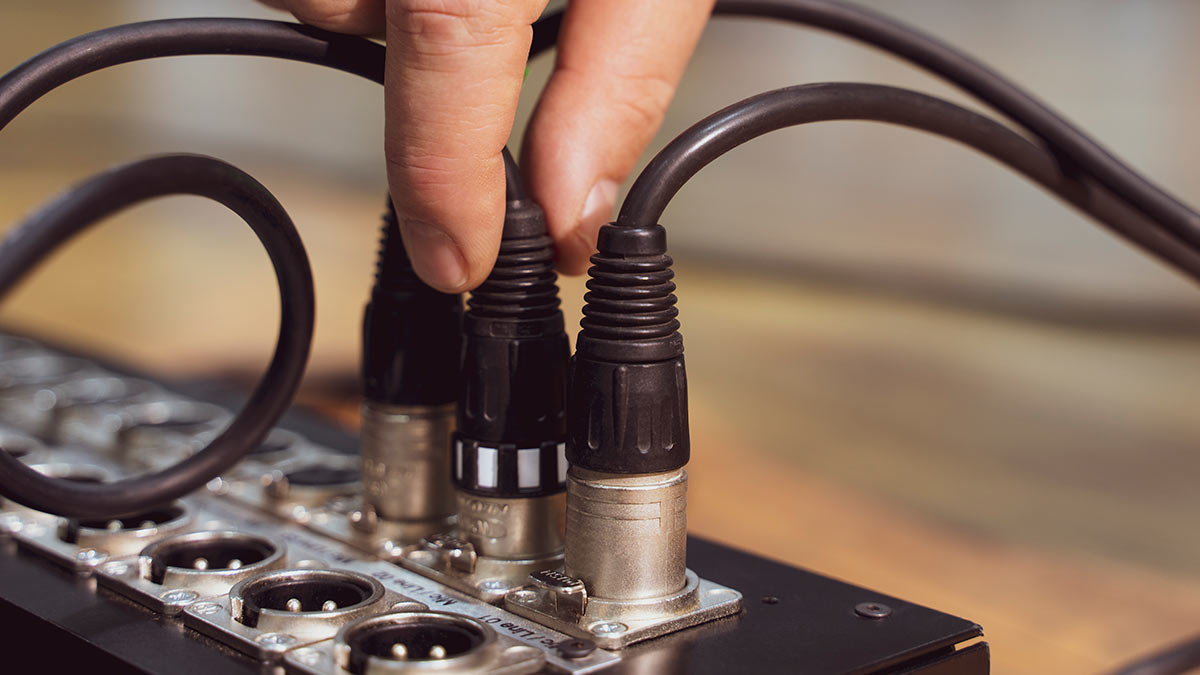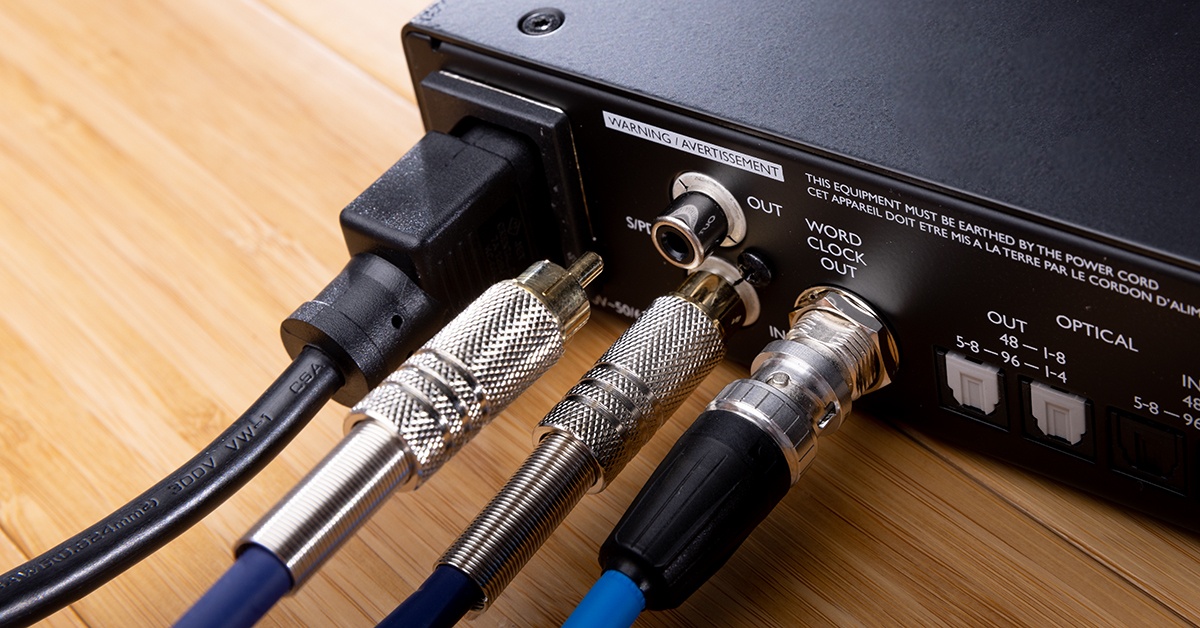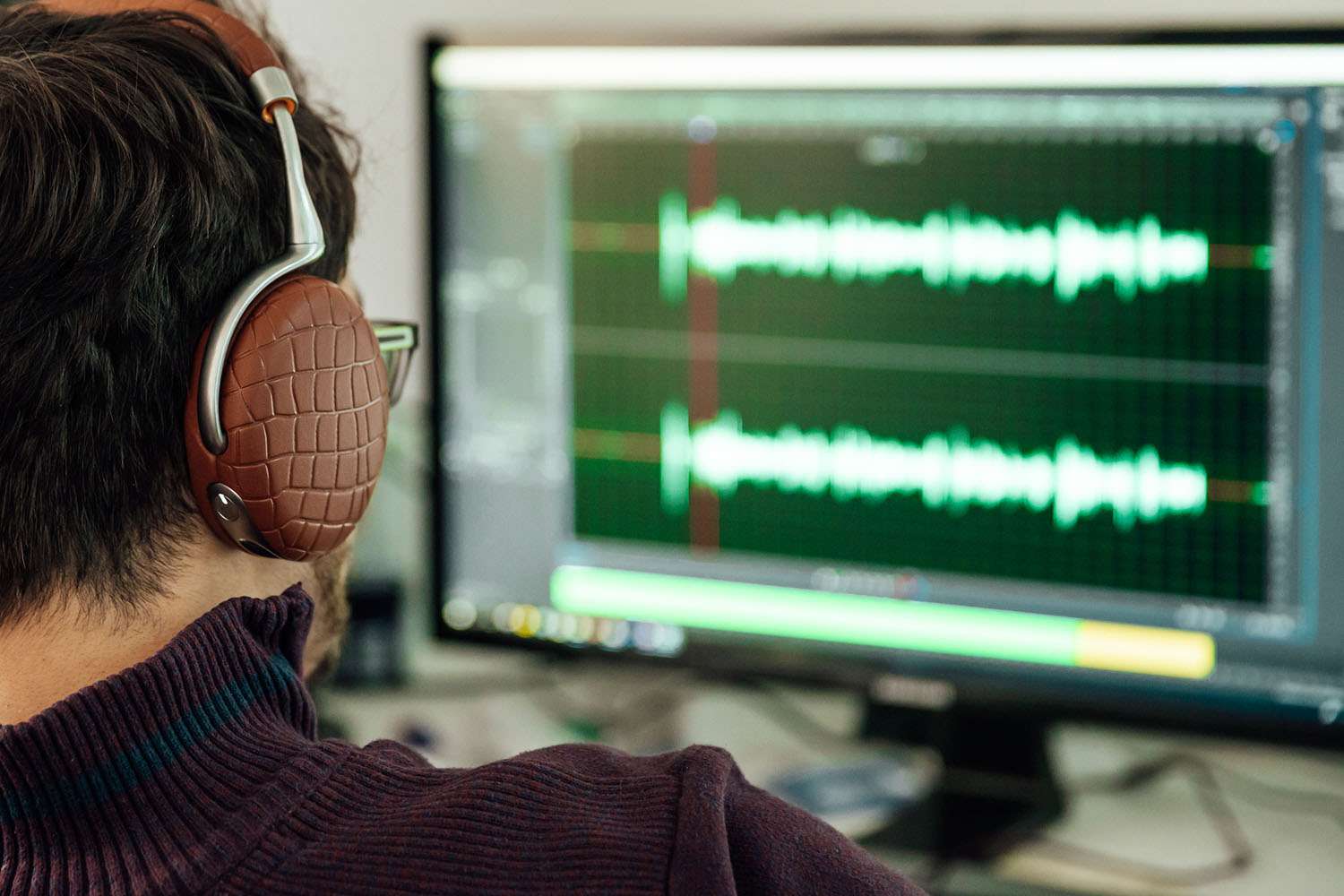Home>Production & Technology>Audio Cable>How To Get Virtual Audio Cable And Headphones


Audio Cable
How To Get Virtual Audio Cable And Headphones
Modified: January 27, 2024
Learn how to get a virtual audio cable and connect your headphones for an enhanced audio experience. Discover the benefits of using an audio cable for seamless audio transmission.
(Many of the links in this article redirect to a specific reviewed product. Your purchase of these products through affiliate links helps to generate commission for AudioLover.com, at no extra cost. Learn more)
Table of Contents
Introduction
Welcome to the world of audio cables, where the quality of your sound is intimately connected to the cables you use. Whether you are an audio enthusiast, a gamer, or a content creator, having the right audio setup is essential to achieve the best audio experience. One of the key components in any audio setup is the audio cable. While traditional analog cables have been the go-to choice for many years, the rise of digital audio and the need for flexible audio routing has brought about a new player in the game – the Virtual Audio Cable.
Virtual Audio Cable, also known as VAC, is a software application that allows you to create virtual audio devices and routes audio signals between them. In other words, it acts as a bridge, enabling you to connect different applications and devices in your audio setup. With Virtual Audio Cable, you can send audio from one application to another, route audio between different devices, or even combine multiple audio sources into one.
In this article, we will explore the world of Virtual Audio Cable and how it can enhance your audio experience. We will discuss the benefits of using Virtual Audio Cable, the process of installing and setting it up, as well as how to configure your headphones to work seamlessly with it. So, whether you are a musician recording tracks, a gamer looking for immersive audio, or a content creator needing flexible audio routing, read on to discover how Virtual Audio Cable can take your audio setup to the next level.
What is Virtual Audio Cable?
Virtual Audio Cable (VAC) is a software application that enables the creation of virtual audio devices on your computer. It essentially acts as a virtual audio cable, allowing you to route audio between different applications and devices. With VAC, you can send audio from one program to another, or even combine multiple audio sources into a single output.
Traditional audio cables physically connect devices, such as headphones, speakers, or microphones, to your computer’s audio interface. However, with Virtual Audio Cable, the audio routing is done virtually within the software. This means you can easily route audio signals without the limitations of physical cables or device connections.
By creating virtual audio cables, VAC provides a flexible and customizable audio routing solution. You can configure the number of virtual cables you need and set up the connections between applications and devices as per your requirements. This allows you to have complete control over your audio setup and enables seamless integration of various audio sources.
One of the key advantages of using Virtual Audio Cable is the ability to transfer audio between applications. For example, you can route the audio output of a media player to a recording software, allowing you to capture and save the audio in real-time. This is particularly useful for musicians and content creators who need to record audio streams or create podcasts.
Another benefit is the ability to combine multiple audio sources into one. With Virtual Audio Cable, you can mix audio from different applications or devices, creating a unified audio stream. This is ideal for gamers who want to have game sound effects, voice chat, and background music blended together for a more immersive gaming experience.
Overall, Virtual Audio Cable offers a versatile solution for managing and routing audio in your computer setup. Whether you need to redirect audio between applications, create virtual audio devices, or mix multiple audio sources, VAC provides the necessary tools and flexibility to enhance your audio experience.
Benefits of Virtual Audio Cable
Virtual Audio Cable (VAC) offers numerous benefits that can greatly enhance your audio experience. Whether you are a professional musician, a gamer, or a content creator, here are some key advantages of using Virtual Audio Cable:
- Flexible Audio Routing: One of the primary benefits of VAC is its ability to route audio signals between different applications and devices. This flexibility allows you to direct audio from one program to another, enabling you to record audio streams, mix audio sources, or create customized audio setups.
- Virtual Audio Devices: With VAC, you can create virtual audio devices on your computer. These virtual devices act as virtual sound cards, giving you the ability to use them in your audio setup. This means you can have multiple virtual audio outputs and inputs, expanding the options for audio routing and control.
- Real-Time Audio Capture: VAC makes it easy to capture audio in real-time. You can route the audio output from applications to a recording software, allowing you to save audio streams and create high-quality recordings. This is particularly useful for musicians recording tracks or content creators who need to capture audio from different sources.
- Mixing Multiple Audio Sources: Virtual Audio Cable enables you to mix audio from various sources into a single output. Whether you want to combine game sound effects, voice chat, and background music while gaming, or blend audio from different applications for a specific project, VAC gives you the flexibility to create customized audio mixes.
- Seamless Integration: With VAC, you can seamlessly integrate different applications and devices in your audio setup. You can easily redirect audio between programs or devices without the need for physical connections. This allows for a more streamlined and efficient workflow, saving you time and effort in managing your audio configuration.
By utilizing Virtual Audio Cable, you can optimize your audio routing, expand the capabilities of your setup, and achieve a higher level of control and customization. Whether you are a professional in the audio industry or an enthusiast looking to enhance your audio experience, VAC is a valuable tool that unlocks countless possibilities for audio management and creativity.
Installing Virtual Audio Cable
Installing Virtual Audio Cable (VAC) on your computer is a relatively simple process. Follow the steps below to get started:
- Visit the official website or a trusted software download platform to obtain the installation file for Virtual Audio Cable.
- Once you have downloaded the installation file, locate it on your computer and double-click it to begin the installation process.
- Follow the on-screen prompts to install VAC. You may be asked to agree to the software license agreement and select the installation directory.
- During the installation, you may be prompted to install additional software components or drivers that are required for VAC to function properly. Make sure to read the prompts carefully and install any necessary components.
- After the installation is complete, you may need to restart your computer for the changes to take effect.
- Once your computer has restarted, Virtual Audio Cable should be installed and ready to use.
It’s worth noting that Virtual Audio Cable is a paid software, but it offers a free trial version with limited functionality. This allows you to try out the software and determine if it suits your needs before purchasing a license. If you decide to purchase a license, make sure to follow the instructions provided by the VAC website or the software vendor to activate the full version of the software.
Keep in mind that the installation process may vary slightly depending on your operating system and the version of Virtual Audio Cable you are installing. It’s always a good idea to consult the software documentation or the support resources provided by the software vendor if you encounter any issues during the installation process.
Once you have successfully installed Virtual Audio Cable, you can proceed to set it up and configure it according to your specific audio requirements.
Setting up Virtual Audio Cable
After you have installed Virtual Audio Cable (VAC) on your computer, it’s time to set it up and configure it for optimal audio routing. Follow the steps below to get started:
- Launch Virtual Audio Cable: Locate the Virtual Audio Cable software application on your computer and launch it. The application may have a user interface that allows you to configure the virtual audio cables and their settings.
- Create Virtual Cables: In the VAC software, you can create virtual audio cables. These virtual cables act as the bridge for audio routing. Typically, you can create multiple virtual cables based on your requirements. You can specify the number of cables to create and configure their individual settings.
- Configure Cable Parameters: Each virtual audio cable may have configurable parameters. You can set the sample rate, bit depth, and buffer size for each cable to match the audio specifications of your system. These settings can affect the audio quality and performance, so it’s important to choose appropriate values.
- Route Audio Streams: Once you have created the virtual audio cables, you can start routing audio streams. This can be done by specifying the audio source and destination for each cable. For example, you can route audio from a media player to a recording software by selecting the appropriate source and destination for the virtual cable.
- Test and Adjust: After setting up the audio routing, it’s important to test the functionality and adjust the settings as needed. Play audio from different applications and verify that the audio is being properly routed through the virtual cables. If needed, you can fine-tune the cable parameters or change the routing configurations.
Additionally, it’s recommended to explore the documentation or user guide provided by the Virtual Audio Cable software to familiarize yourself with additional features and settings that may enhance your audio setup. The configuration options may vary depending on the specific version and capabilities of VAC.
Remember to save your settings and configurations in the Virtual Audio Cable application so that the setup remains intact even after you close the program. This will ensure that the virtual cables and audio routing are maintained between sessions.
By following these steps and properly configuring Virtual Audio Cable, you can take full advantage of its capabilities and customize your audio setup to suit your specific needs.
Configuring Headphones for Virtual Audio Cable
Once you have set up Virtual Audio Cable (VAC) on your computer, you may want to configure your headphones to work seamlessly with the virtual audio routing. Follow the steps below to configure your headphones for VAC:
- Check Audio Connectivity: Ensure that your headphones are properly connected to your computer’s audio output. Whether you are using wired headphones or wireless ones with a USB dongle, make sure the connection is secure and stable.
- Select Headphones as Default Playback Device: In your computer’s sound settings, set your headphones as the default playback device. This will ensure that audio output from Virtual Audio Cable is routed to your headphones.
- Configure Virtual Audio Cable Settings: In the Virtual Audio Cable software, locate the settings related to audio output and make sure the virtual cables are set to output audio to the default playback device (your headphones). This ensures that the audio routed through the virtual cables is properly directed to your headphones.
- Adjust Headphone Volume: Depending on your headphone model, you may have physical volume controls or software controls to adjust the headphone volume. Set the volume to a comfortable level for listening to the audio output.
- Test Audio Playback: Play audio from various sources through Virtual Audio Cable and listen through your headphones. Ensure that the audio is properly routed and that you can hear it clearly through your headphones. If you encounter any issues, double-check the settings and connections.
It’s important to note that the configuration process may vary depending on the specific software and hardware you are using with Virtual Audio Cable. Refer to the documentation or user guide for your specific headphones and any accompanying software for detailed instructions on configuring them for optimal performance.
Virtual Audio Cable offers a flexible solution for audio routing, allowing you to customize your audio setup according to your needs. By properly configuring your headphones to work with VAC, you can ensure that you have a seamless and immersive audio experience across various applications and devices.
Troubleshooting Tips for Virtual Audio Cable and Headphones
While Virtual Audio Cable (VAC) and headphones can greatly enhance your audio experience, you may encounter occasional issues that require troubleshooting. Here are some tips to help you address common problems:
- Check Connections: Ensure that your headphones are properly connected to the audio output and that the cables are securely plugged in. If you are using wireless headphones, make sure the USB dongle or Bluetooth connection is stable.
- Verify Default Playback Device: Confirm that your headphones are set as the default playback device in your computer’s sound settings. This ensures that audio output from VAC is directed to your headphones.
- Restart Virtual Audio Cable: If you experience audio routing issues, try restarting the Virtual Audio Cable software. This can help refresh the audio connections and resolve any temporary glitches.
- Adjust Audio Levels: If you notice imbalanced audio or inconsistencies in volume, adjust the audio levels of your headphones. You can also check the settings in VAC to ensure that the output levels are properly configured.
- Update Software and Drivers: Keep your Virtual Audio Cable software and headphone drivers up to date. Check for any available updates from the software vendor or headphone manufacturer’s website. Updated software and drivers often address compatibility issues and provide performance improvements.
- Disable Conflicting Applications: Some applications or programs running on your computer could conflict with Virtual Audio Cable. Temporarily disable any unnecessary applications and try routing audio again to see if the issue is resolved.
- Check Cable Settings: Verify that the virtual audio cables in VAC are properly configured. Ensure that the correct audio sources and destinations are selected for each cable. You may need to double-check the settings and make adjustments if needed.
- Test with Different Applications: If you experience audio issues with specific applications, try routing audio through a different program to see if the problem persists. This can help determine whether the issue lies with the application or the audio routing setup.
- Consult Documentation and Support: Refer to the documentation or user guide provided by Virtual Audio Cable and your headphone manufacturer for specific troubleshooting steps. They may have additional recommendations for resolving common issues.
If you continue to experience persistent issues with Virtual Audio Cable and your headphones, reaching out to the software vendor’s support team or the headphone manufacturer’s customer support can provide further assistance and guidance tailored to your specific setup.
By applying these troubleshooting tips, you can overcome common obstacles and enjoy a smooth and seamless audio experience with Virtual Audio Cable and your headphones.
Conclusion
Virtual Audio Cable (VAC) opens up a world of possibilities for audio enthusiasts, gamers, and content creators looking to enhance their audio experience. With its ability to create virtual audio devices and route audio signals between them, VAC provides flexibility, customization, and seamless integration in your audio setup.
Throughout this article, we have explored the features and benefits of Virtual Audio Cable, the installation process, setting it up, configuring headphones, and troubleshooting common issues. By following the provided guidelines, you can leverage VAC to achieve optimal audio routing and take your audio experience to new heights.
Whether you are a musician recording tracks, a gamer seeking immersive sound effects, or a content creator needing flexible audio routing, VAC offers a versatile and powerful solution. It allows you to mix audio streams, redirect audio between applications, and create virtual audio devices tailored to your specific needs and preferences.
Remember to ensure your headphones are properly connected and set as the default playback device, configure the virtual audio cables and headphones in VAC, and troubleshoot any issues that may arise. Keep your software and drivers up to date, and consult the respective documentation and support resources for detailed instructions.
By harnessing the capabilities of Virtual Audio Cable and optimizing your headphone configuration, you can unleash the full potential of your audio setup, immersing yourself in high-quality sound and unleashing your creativity.
So go ahead, experiment with Virtual Audio Cable, explore its features, and elevate your audio experience to new heights. Whether you’re creating music, gaming, or producing content, VAC will be your reliable companion in achieving the best possible sound.











